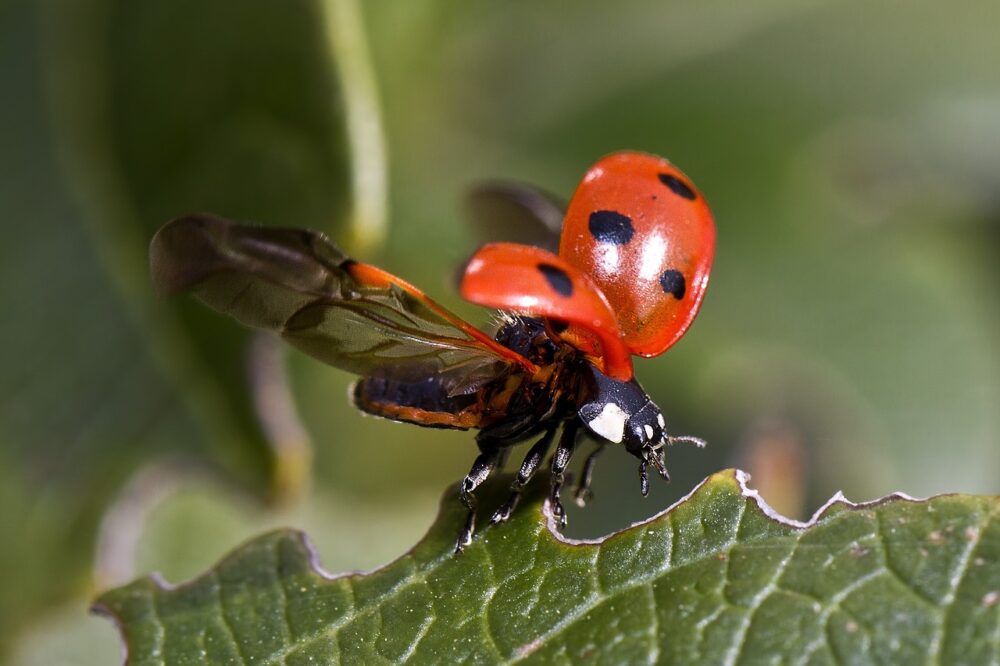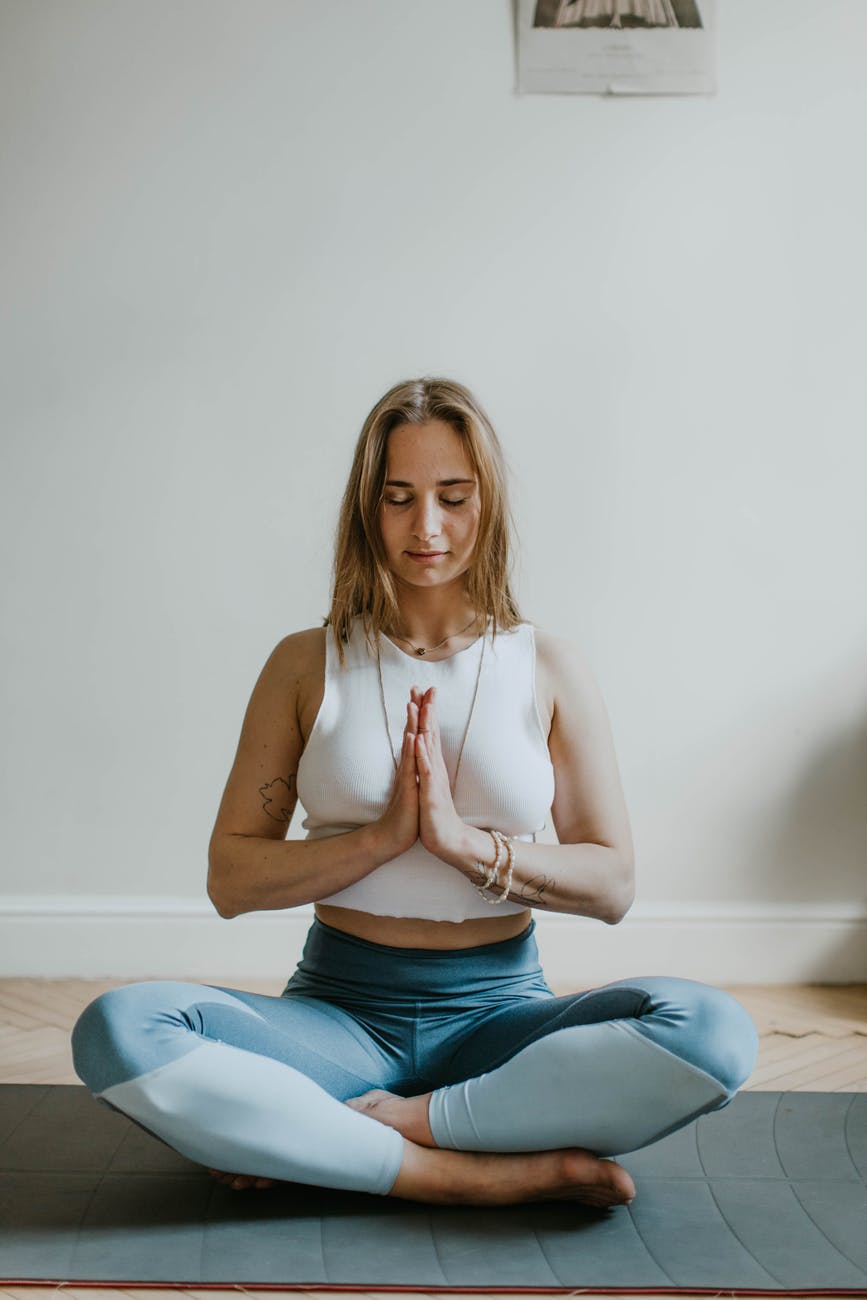
Here are seven helpful yoga poses for covid-related symptoms such as colds, cough, breathlessness, broncho-pneumonia &/or bronchitis!
1. Paschimottanasana – Yoga for Covid Related Symptoms

Paschima means the west and it implies the back of the whole body from the head to the heels. In this asana the back of the whole body is intensely stretched, hence the name.
How to:
- -Sit on the floor with the legs stretched straight in front. Place the palms on the floor by the side of the hips. Take a few deep breaths.
- -Exhale, extend the hands, and catch the toes. Hold the right big toe between the right thumb and the index and middle fingers and likewise the left big toe.
- -Extend the spine and try to keep the back concave. Bend from the pelvic region of the back and also to extend the arms from the shoulders keeping the back flat and the spine straight. Breathe deeply.
- -Exhale, pull the trunk forward, and touch the forehead to the knees. (If easy enough grip the soles and rest the chin beyond the knees)
- -Hold this position from 1-5 minutes, breathing evenly.
Effects:
A good stay in this pose massages the heart, the spinal column, and the abdominal organs, which feel refreshed, and the mind is rested. Due to the extra stretch given to the pelvic region more oxygenated blood is brought there and the gonad glands absorb the required nutrition from the blood. This also increases vitality, helps to cure impotence, and leads to sex control. This asana tones the abdominal organs, the kidneys, rejuvenates the whole spine, and improves digestion.
2. Supta Virasana

Supta means lying down. Vira means a hero, warrior, champion. In this asana one reclines back on the floor and stretches the arms behind the head.
How to:
- -Sit in Virasana by kneeling on the floor. Keep the knees together (beginners may keep the knees apart) and spread the feet about 18 inches apart
- -Rest the buttocks on the floor between the feet. The inner side of each calf touching the outer side of its respective thigh. Toes stay untucked and keep the tops of the feet on the floor
- -Exhale, recline the trunk back and rest the elbows one by one on the floor
- -At first rest the crown of the head on the floor. Gradually rest the back of the head and then the back on the floor. Take the arms over the head and stretch them out straight or grab opposite elbows
- -Hold this pose as long as you can while breathing deeply. Then place the arms beside the trunk, press the elbows to the floor to sit up again with an exhalation
Effects:
This asana stretches the abdominal organs and the pelvic region. People whose legs ache will get relief from holding this pose for 10-15 minutes and it is recommended to athletes and all who have to walk or stand for long hours.
3. Salamba Sirsasana – Yoga for Covid

Salamba means with support. Sirsa means the head. This is the headstand pose, one of the most important Yogic asanas. Its mastery gives one balance and poise, both physically and mentally.
How to:
- -Use a yoga mat on the floor and kneel on it.
- -Rest the forearms on the mat and keep the elbows about shoulder distance apart
- -Interlock the fingers so that the palms form a cup and place the sides of the palms on the mat. The finger should be kept tightly locked
- -Rest the crown of the head only on the mat, so that the back of the head touches the palms which are cupped
- -After securing the head position, raise the knees from the floor by moving the toes closer to the head
- -Exhale, take a gentle swing from the floor and lift the legs off the ground simultaneously with bent knees (beginners should have assistance or try this asana against a wall for more support by hopping and kicking one leg up at a time until balancing with both legs extended)
- -Stretch the legs and stand on the head, keeping the whole body perpendicular to the floor
Effects:
Regular practice of Sirsasana makes healthy pure blood flow through the brain cells. This rejuvenates them so that thinking power increases and thoughts become clearer. It ensures a proper blood supply to the pituitary and pineal glands in the brain. Our growth, health, and vitality depend on the proper functioning of these two glands. Regulates loss of sleep, memory, and vitality. The lungs gain the power to resist any climate and stand up to any work, which relieves one from colds, coughs, tonsillitis, halitosis, and palpitations. One becomes balanced and self-reliant in pain and pleasure, loss and gain, shame and fame and defeat and victory.
4. Halasana – Yoga for Covid
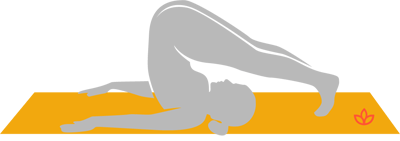
Hala means plough, the shape of which this posture resembles, hence the name.
How to:
- -Start in Salamba Sarvangasana (supported shoulder stand) or by simply lying flat on your back
- -Place the hands in the middle of the back and press it to keep the trunk perpendicular to the floor
- -From shoulder stand lower the trunk slightly, moving the legs over the head and resting the toes on the floor
- -If lying with your back on the mat press into your feet, lift your hips, and support yourself on the low back with your hands as you lower the knees on your forehead
- -Stretch the arms on the floor in the direction opposite to that of the legs
- -Hold the pose from 1-5 minutes with normal breathing
Effects:
Helps regulate the function of the thyroid and parathyroid glands which are situated in the neck region. Increases blood flow around the neck, chest, and to the heart without any strain by force of gravity. As a result, people suffering from breathlessness, palpitation, asthma, bronchitis, and throat ailments get relief. Which makes this yoga pose perfect for covid symptoms. Continued practice of this asana eradicates common colds and other nasal disturbances.
5. Salamba Sarvangasana

Salamba means supported, and Sarva= all, whole, entire, complete; anga= limb or body. In this pose the whole body benefits from the exercise, hence the name.
How to:
- -Lie flat on the back on the carpet keeping the legs stretched out & tightened at the knees, hands by the sides of the legs palms facing down
- -Bend the knees and move the legs towards the stomach till the thighs press it.
- -Raise the hips from the floor as you exhale and rest the hands on them by bending the arms at the elbows.
- -Raise the trunk up perpendicularly supported by the hands until the chest touches the chin
- -Stretch the legs straight with toes pointing up (only the back of the head and the neck, shoulders, and the backs of the arms up to elbows should rest on the floor. place hands in the middle of the spine)
Effects:
Sarvangasana is the Mother of asanas. As a mother strives for harmony in the home, so this asana strives for the harmony of the human system. Many of the asanas (poses) have a direct effect on the glands and help them function properly. Sarvangasana does this for the thyroid and parathyroid gland. Healthy blood is allowed to circulate around the neck and chest, and as a result, people suffering from breathlessness, palpitation, asthma, bronchitis, common colds, headaches and throat ailments. Avoid this pose if you suffer from high blood pressure unless you can stay in plough pose, Halasana, for 3 minutes.
6. Dhanurasana – Yoga for Covid Related Symptoms
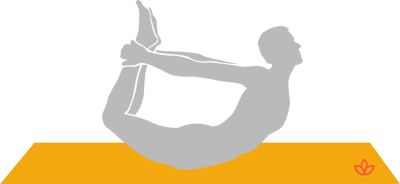
Dhanu means a bow. The hands are used like a bow-string to pull the head, trunk, and legs up and the posture resembles a bent bow.
How to:
- -Lie full length on the floor on the stomach
- -Exhale and bend the knees. Stretch the arms back and hold the left ankle with the left hand and the right ankle with the right hand. Take two breaths
- -Now exhale completely and pull the legs up by raising the knees above the floor, and simultaneously lift the chest off the floor. The arms and hands act like a bow-string to tauten the body like a bent bow
- -Lift up the head and pull it as far back as possible. Do not rest either the ribs or the pelvic bones on the floor. Only the abdomen bears the weight of the body on the floor
- -While raising the legs do not join them at the knees. Stay in the pose to your capacity from 20 seconds to one minute
Effects:
This asana brings back elasticity to the spine and tones the abdominal organs. By regular practice of Dhanurasana, you will obtain relief from slipped discs without being forced to rest or undergo surgical treatment
7. Adho Mukha Svanasana – Yoga for Covid Related Symptoms
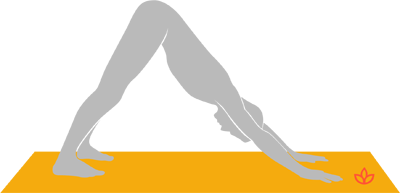
How to:
- -Lie full length on the floor on the stomach, face downwards. The feet should be kept one foot apart
- -Rest the palms by the side of the chest, the fingers straight and pointing in the direction of the head
- -Exhale and raise the trunk from the floor. Straighten the arms, move the head inwards towards the feet and place the crown of the head on the floor, keeping the elbows straight and extending the back
- -The feet should be parallel to each other, the toes pointing straight ahead. Stay in the pose for about a minute with deep breathing
Effects:
Removes fatigue and brings back the lost energy. The pose is especially good for runners. Relieves pain and stiffness in the heels and helps to soften calcaneal spurs. It strengthens the ankles. Helps eradicate stiffness and arthritis in the region of the shoulder-blades. The rate of the heartbeat is slowed down. Rejuvenates the brain cells and invigorates the brain.

